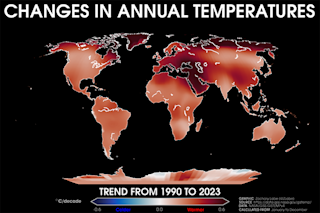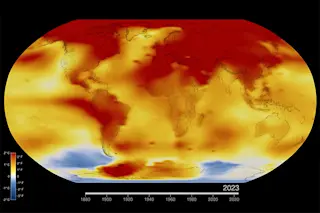The low pressure system that exploded on Dec. 30, 2015 into one of the strongest storms on record in the North Atlantic is seen in this video consisting of enhanced infrared imagery from the Meteosat-10 satellite. The video shows the entire development of this extremely powerful system. Meteorological surface analyses also are included, at the end. (Source: National Weather Service Ocean Prediction Center) A monstrously powerful North Atlantic storm has done the unthinkable: By drawing warm air up from the south into the Arctic, it likely pushed up temperatures at the North Pole today to just above the melting point. The North Pole unfreezing — in winter? That's seems like a fitting way to end a year that will go down as the warmest on record, by far.
See also: 2015 will almost certainly end as warmest year on record — and 2016 is now forecast to be at least ...














